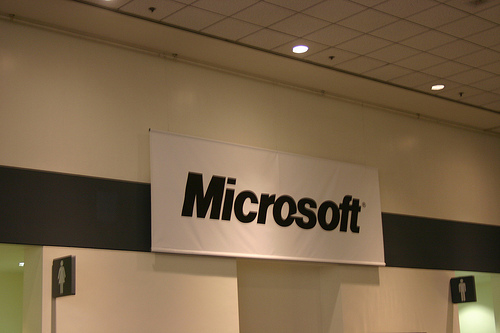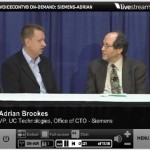Well since Gartner just released their first ever Magic Quadrant on Social CRM (July 3rd) I thought I’d put a few of my thoughts together and hopefully generate some discussion.
A quick few thoughts on understanding the drivers for Social CRM (SCRM)
Gartner Social CRM 2009 Forecast
• By 2010, 60% of Fortune 1000 will have some sort of community
• But 50% of those will fail to manage properly –losing customer value in the bargain
Gartner 360 Social CRM – Magic Quadrant
• Gartner predict $1bn spend on SCRM market in 2011.
Nielsen, Global Faces & Networked Places, 2009
• More time is spent on social networks than personal email
Cone Business in Social Media 2009
• 60% of consumers say they interact with companies on the social web
• 93% of consumers believe a company should have a presence in social media
While there are many areas that require important consideration when building a bridge between the social (public) and corporate enterprise, this short post will focus upon the integration points and elements that deliver the most value to the Customer Contact and CRM applications.
1 – Social Listening, Brand Management and Protection
2 – Call Deflection, Building Community Platforms
3 – First Time Resolution, Peer to Peer engagement, Social Search and Expertise
Transparency
4 – Workforce Management and Optimisation
5 – Social Customer Support and Social Commerce (Sales) – Instant Collaboration Tools
6 – Crowdsourcing Innovation – Collaborating with the outside World
“IT is being driven by consumer technologies now. Social computing on the rise. We are socially connected and digitally enabled. The power of consumers rising through their ability to choose. The social customer rules the business landscape.” (Ed Thompson – Gartner)
Social Listening – Who’s talking about your company and what are they
saying?
The first and most tactical application of Social CRM tools is provided by gaining awareness of the pubic social networks where your brand is discussed and being able to find and react to customers.
The second stage (and somewhat natural progression) of this approach is to become more strategic and engaging about your brand on the social web, and to employ software tooling to build brand awareness, monitor trending and increase acknowledgement among customers and partners.
This can be realised (for example) by rewarding influencers, top contributors and leaders in on-line communities. Knowledge analytics within the software provides deep analysis and insight provided by your customers and partners in these social circles, which can lead to product or service innovation and meaningful and real customer requirements.
The current most widely adopted applications in this space are those from Radian6, Pluck,
Awareness, Jive and now Lithium Technologies with their acquisition of Scout Labs provide
tighter integration with Genesys.
Scenario – Major airline (during the recent volcanic ash cloud and strike action) were able to better protect their brand by making contact with those customers that were unable to get through to the Contact Centre due to over subscription – by reaching out through the social public network.
Cost Benefit – Automation can provide significant savings in marketing and brand activities due to the automation of scanning, measuring and reporting.
Call Deflection – How to reduce the number of most expensive of
interactions
Once an enterprise has developed an understanding of the important social questions and networks surrounding their brand – such as
What are people talking about?
Where are they spending most of their time?
Who are the net contributors?
…It becomes far less complex to build effective user communities and portals.
These customer, partner and possibly developer community portals can not only deliver great value to the users, but can also reduce the number of first and second line contacts to the enterprise dramatically.
One of the major reasons for this is that they are viewed as somewhat independent of the provider.
User communities are considered a trusted resource since they are generally adopted and run by those people with keen interest and experience with the product or service, and therefore the knowledge held within is not viewed with the same level of natural human criticality (commercial interest, conflict of interest, axe to grind) as information given by ”the manufacturer”.
There is no doubt that building communities amplifies enterprise efforts in almost every direction.
“The community network and Social CRM can empower your customers to innovate for you, to support each other for you and to promote and even sell for the organisation.
Companies such as Best Buy are seeing 40%-plus increases in sales as a result of their
customer communities – HP and Linksys are seeing tens of millions of dollars in support
savings because customers are answering questions for each other.
iRobot and Sage Software are seeing millions of dollars in new revenue each year from ideas
that come direct from the community network.” (Lithium)
While there are multiple examples of unpaid community influencers or “external employees”
who are thousands of dollars of value to companies like Logitech there are other benefits to
such user communities.
During the recent natural disasters to befall Asia Pacific region on Christmas Day in 2006 , Linksys (Cisco) suffered a critical infrastructure failure. However, customers were able to switch from the non-contactable Contact Centre to the on-line forum and community area on their busiest day of the year.
Forum members, advocates and experts were able to answer most of the annual spike of customer inquiries without Linksys incurring any cost whatsoever.
Those solutions that can enrich these community platforms by expediting the most efficient contact mechanism between the agent and the customer or partner and also offer instant collaboration solutions such as web based voice and presence controls will do well.
Dependant upon the type of community, video and web collaboration (which provides clearer understanding for more
complex inquiries) and therefore more timely resolution, could really deliver value.
Indeed adoption of H.264 SVC codec could provide a lever here since many customers are likely to be on the end of lossy networks.
First time Resolution, Peer Engagement and Social Searches
Many organisations are looking to increase first time resolution rates through better use of the tacit knowledge of their workforce, regardless of whether they are full-time CRM agents in the contact centre or back-office workers in their home or satellite offices.
In order to locate the best resource to expedite the customer interaction to conclusion, it is first necessary to understand how organisations find and locate the subject matter expert or most appropriate person.
There are currently two approaches available
Personal Profile Pages
Personal Profile pages are an employee’s mechanism for providing the corporate social network or directory with a freeform text description of their role, duties, skills, expertise and experience within the enterprise.
Current Social Enterprise Networking portrays IBM with their Bluepages profile system (an element of Lotus Connections) and Telligent Systems as having the more capable solutions in personal profile features.
With IBM, this is no doubt due to the know-how they have derived from using the system internally for many years to profile and locate the expertise within their own company.
However, there can be several drawbacks to the employee profile mechanism.
• Employees only enter what they believe to be pertinent to their current company and
job role.
• Profiles tend to not capture the employees’ full skill and experience profile.
• Profiles are very often not kept up-to-date.
• Employees rarely enter skills or interests in external subject matter.
• Employees do not disclose all expertise to “avoid contact” which may seem to make
them less productive in their current position.
Automatic Expertise Harvesting – Social Search
Information harvested from e-mail subject line, Wikis, Blogs, Forums provides a far more rounded approach to expertise transparency in the tacit knowledge world.
It provides greater insight in what the employees may be involved in outside of the work environment as well as within it.
It provides powerful analytics back to the employee who can see where they spend more of their time, who they communicate with the most, and what was discussed, enabling them to quickly identify further people who share the same interests and build better and more effective virtual teams.
This data can then be auto embedded and updated within personal profile pages (as tag clouds etc) as well as searched from the Intranet portal or stand alone web enabled applications.
This will truly drive an increase of first time resolution in the contact centre / Social CRM environment, as the organisation will better understand the knowledge held within their human capital regardless of position, geographical location or personal profile – and be able to match their customers’ inquiries in a peer to peer model.
Workforce Management and Optimisation – Cost Reduction
One of the major benefits of the insight that the analytics provide in the social space is as follows –
If we know what people are talking about, who they are from a group perspective and how much time they spend discussing and collaborating on certain topics, we can better proactively drive that behaviour and better and more effectively align the social interaction of employees with the corporate strategy.
Starting with simple cost reduction examples –
Real World Scenarios
New Sales – A potential customer questions whether they should buy your product or service on an
independent user community forum or maybe on Twitter.
This is picked up upon by the enterprise employee / agent who responds and brings it in to the enterprise user community forum as a new discussion thread.
A previous community user sees the question and responds – prompting the potential customer to be drawn toward the enterprise community forum – which is connected to the CRM application.
A sales agent learns about the discussion thread through the CRM connection and proceeds as a potential lead.
Positive responses from your existing advocates to the thread on the user community forum can be re-tweeted by social marketing to the Global audience promoting positive brand awareness.
Can the Social Community be leveraged as a support asset?
Many unpaid individuals will create content that is of high value to your existing customer communities in the form of repair guides, warranty information, Frequently Asked Questions etc.
This content can be grabbed and injected in to existing Knowledge Based articles within your Web Presence (such as RightNow) and the enterprise can credit the authorship of the article to the community user. (Reward systems, Discount Vouchers and Kudos systems are available – dependant upon the market – to ensure that the advocate understands you value their contribution and input)
This knowledge can now be leveraged by all customers who will benefit from the collective wisdom of the community, and maybe improve upon it over time.
Moreover the quality and relevance of the content will drive support costs down.
So where do we focus the enterprise agents now they have less costly interactions?
One use case that should not be underestimated in both the reduced cost of customer acquisition and increased loyalty is within the scenario of agent outbound contact initiated by incoming or captured social inquiry – This provides a very powerful user experience when performed successfully.
Another powerful re-use of resources could be by bringing you field engineering force to bear as virtual or back office agents. Presence / availability could be automated – set by geo location (back at depot) etc.
Social Customer Support and Social Commerce
“CRM is no longer just a model for managing customers but one of customer engagement.” (CRM Media)
The social network and user communities can now be used to automatically identify and raise service tickets.
It is far easier to track these issues through to completion both for the customer and for the enterprise due to tagging and social search tools.
This in turn deepens customer relationships, as the blend of social and business interactions provides better responsiveness while allowing the prospect or existing customer to choose their preferred media.
Crowdsourcing Innovation – Collaborating with the outside World
Real World Example
An idea portal in the user community has a list of customer driven ideas and changes for the enterprise portfolio of products and services.
Users make recommendations which are then voted on by the community at large, which allows tracking of the top ideas at any time.
These may be considered for implementation and forwarded to the relevant department in the organisation.
This has been taken one step further recently where companies that rely upon innovation have set up web portals with varying degrees of cash rewards for ideas to solve current problems or challenges.
An example is Eli Lilley who funded the formation of a web based innovation company Innovention –
but there are many more.
Imagine if we leveraged our social communities and those of our competitors in the same manner ?
Submitted by Darren Gallagher (@dgallagh)




